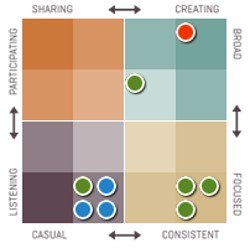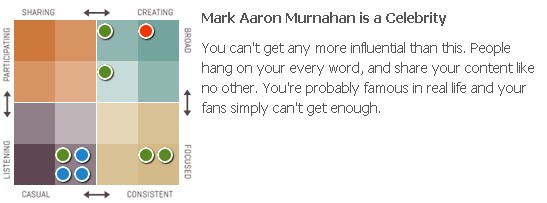
... and Companies!
Let’s consider a trait that we can each benefit from, and most of us should work harder to achieve. I will tell it in personal terms, and then explain how it applies to marketing a business.
I am sure you must know somebody who makes you feel comfortable to talk with about anything you want to talk about. When I find myself encountering this rare-as-a-unicorn person who just wants to know about me, and the things I want, it almost feels awkward at first, but in a uniquely good way.
I am talking about those people who listen attentively and do more than just nod their head and yawn as you ramble, while waiting to assert their agenda. I mean the kind who draw you in and make you feel totally comfortable to want what you want, think what you think, and be who you are. You tell them things, because they actually show their interest in you.
When you encounter this type of person, it is easy to feel that their story has got to be a great one. Their expressed interest in you has made them more interesting, and it makes you want to know them better, and to hear their side. Suddenly, there is a desire to switch things around and make the conversation more about them, what they want, what they think, and how you can be a better friend to them.
I hope that you have had the privilege to know somebody like I have described here. If so, you are probably nodding and smiling as you think of the way it makes you feel about them. It may even make you want to ring them on the phone to catch up on things since you last spoke.
Applying Listening to Marketing a Brand
Think about how you feel in a scenario where a person really cares what you have to say. I don’t mean the kind who fake it, but rather the kind where you can sense a sincere interest in you. Don’t you want to be more like them?
Have you ever encountered this feeling that you are talking too much and listening too little? All of the sudden you feel a little bit like a conversation hog, but it is so hard to change. When you want more business, you have to talk more, and it becomes hard to remember those listening skills.
This “listening person” we all enjoy is often there, in the back of our mind, but they are very hard to emulate. What I described is a common dynamic of any relationship, but the special ones we think so kindly about are simply better at it than we are.
In business, we each have our agenda, and our sets of rules for what we think is the best outcome for our own interests. We plan things in ways that we will get what we want out of the relationship, and deviating from that plan is a threat. It is simply against the rules.
In marketing, it is very popular to be the one doing all the talking, and nod and yawn while customers try to tell us what they want. I see extreme selfishness every day in marketing. I see it most profoundly online, because it is easy for companies to scream louder when they think that nobody is listening.
It is important to notice when our set of rules and a selfish mindset diminishes our potential. This is a common outcome when we forget to listen and be that person who becomes more interesting simply by being genuinely interested.
Consider for just a moment the instances when it may be best to approach business as a bit more of an interested introvert, and less of an interesting extrovert. It may create a chance to reset your objectives and become a better “friend” to your customers. The outcome will often be that you will become more interesting, and others will think kindly and smile when they think of your business. The good news is that this truly is scalable to any size of brand!
Are you taking enough time to ask people “What about you?” I guess we could call compassion and listening matters of “growing up” or “wisdom”, but I believe that we can each do more to cultivate our listening and caring skills.
How can you better address the importance of listening to what people want? Will you do the necessary research? Will you take that extra time to slow down and get to know what people want and expect of you?
What do you have to say about this? I welcome your comments, and I want to know “What about you?”
Podcast: Play in new window | Download







